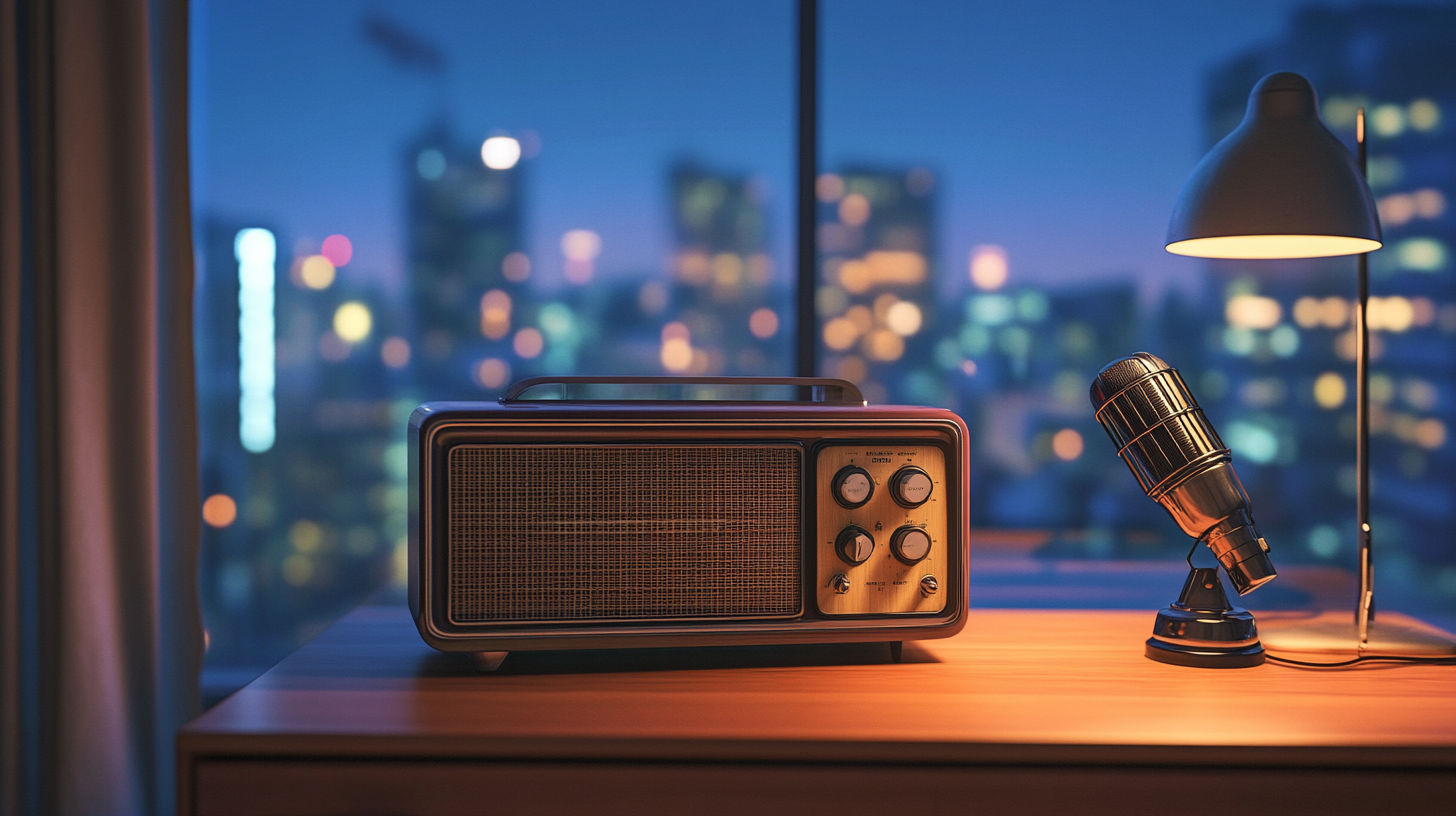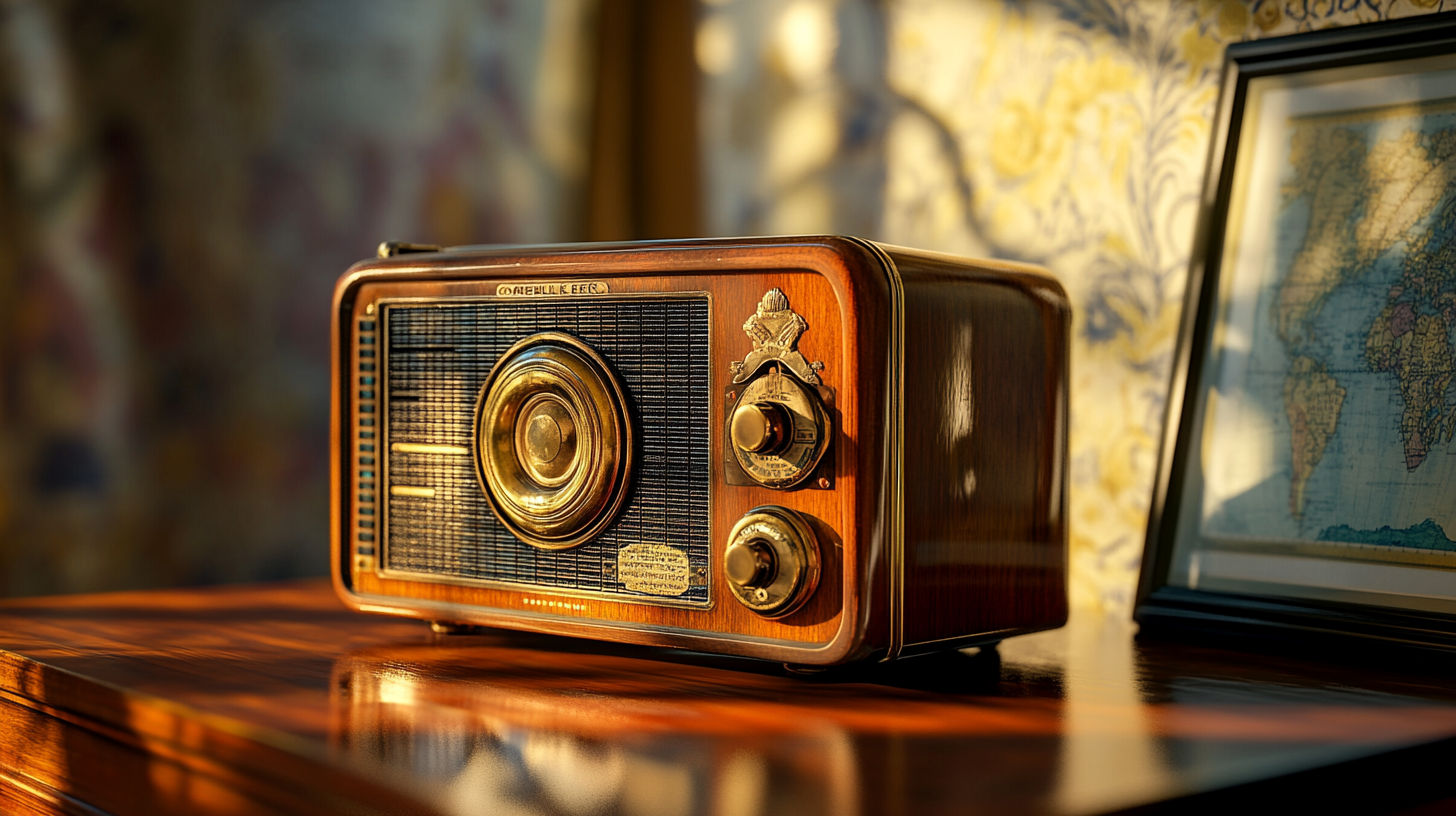Introduction to General Electric Antique Radios
General Electric (GE) has been one of America’s most influential manufacturers of electrical devices since the late 19th century. The company played a significant role in the golden age of radio, producing some of the most iconic and collectible models from the 1930s through the 1960s. Today, these vintage GE radios are highly sought after by collectors for their historical significance, craftsmanship, and nostalgic appeal.
Whether you’ve inherited a vintage GE radio, discovered one at an estate sale, or are considering starting a collection, understanding the value of these antique devices is essential. In this comprehensive guide, we’ll explore the factors that influence GE antique radio values, provide price ranges for popular models, and offer expert advice on evaluating and selling your vintage radio.
The History of General Electric Radios
General Electric’s involvement in radio technology began in the early 20th century when the company formed the Radio Corporation of America (RCA) in 1919. Though RCA eventually became independent, GE continued to manufacture its own radio lines, becoming one of the “Big Three” American radio manufacturers alongside RCA and Westinghouse.
Evolution of General Electric Radios
- 1920s
Early Radio Production
GE begins manufacturing early consumer radios, primarily battery-operated sets with separate speakers. - 1930s
Art Deco Golden Age
Introduction of iconic Art Deco designs including the "cathedral" and "tombstone" style radios that are highly collectible today. - 1940s
Wartime & Post-War Production
Production shifts focus during WWII, followed by new innovations like the introduction of FM technology in consumer models. - 1950s
Transistor Revolution
GE begins transitioning from tube radios to more portable transistor radios, with continued production of higher-end console models. - 1960s-70s
Modern Designs
Introduction of plastic cabinets, clock radios, and more contemporary styling as tube technology is gradually phased out.
GE radios from different eras have distinct characteristics that collectors value. The Art Deco models from the 1930s and early 1940s are particularly prized for their artistic designs and craftsmanship, while mid-century models from the 1950s appeal to collectors of retro Americana and Mid-Century Modern design.
Key Factors That Determine General Electric Radio Value
Model and Rarity
Different GE radio models vary significantly in value based on their rarity and desirability. Limited production runs, special editions, and models with unique features command higher prices. For example, the Art Deco “cathedral” style radios from the 1930s are generally more valuable than common tabletop models from the 1950s.
Condition
The physical and operational condition of a vintage radio is perhaps the most significant value determinant. Radios in excellent original condition with minimal wear will command premium prices.
GE Radio Condition Assessment
Check applicable items to gauge your radio's condition
- Original finish is intact with minimal wear
- Cabinet has no cracks, chips, or significant damage
- All knobs and controls are original and functional
- Dial glass is clear and unbroken
- Radio powers on and receives stations
- Speaker produces clear sound without distortion
- Original tubes are present and working
- Wiring is original and undamaged
- Has original documentation or packaging
Originality
Collectors generally value radios that maintain their original components and finish. While restoration can improve functionality, overly restored radios with non-original parts or refinished cabinets may be less desirable to serious collectors seeking authentic pieces.
Historical Significance
Models that represent important technological advancements or were particularly popular during their time may command higher prices. The first GE models to incorporate FM reception or transistor technology, for example, hold special historical value.
Design Appeal
The aesthetic design of a radio significantly impacts its collectability. Art Deco models from the 1930s and early 1940s with distinctive wooden cabinets are particularly sought after for their artistic value beyond just being functional radios.
Popular General Electric Radio Models and Their Values
General Electric Antique Radio Values
Current market price ranges based on recent sales data
</tbody>
</table>
Notable High-Value GE Radio Models
Some specific GE radio models consistently command higher prices due to their rarity, design significance, or historical importance:
Recent Notable GE Radio Sales
Based on auction and specialty dealer transactions
| Category | Price | Notes |
|---|---|---|
| GE Cathedral Models (1930s) | $200-$500 | Higher for rare models in excellent condition |
| GE Tombstone Radios (1930s-40s) | $150-$400 | Wooden cabinets in original finish command premium |
| GE Console Radios (1940s-50s) | $100-$350 | Size and condition affect value significantly |
| GE Model 409/410 (1951-52) | $70-$150 | Popular tabletop model with FM |
| GE Plastic Table Radios (1950s) | $30-$100 | Colorful models command higher prices |
| GE Transistor Radios (1960s) | $25-$75 | Unique colors or special editions worth more |
| GE Clock Radios (1950s-60s) | $30-$100 | Functioning clock mechanism adds value |
| GE Skyscraper Models (1940s) | $300-$800 | Rare Art Deco design, highly collectible |
</tbody>
</table>
It’s worth noting that exceptionally rare models in pristine condition with original documentation can sometimes sell for significantly more than the ranges listed above, particularly when sold through specialty auctions focusing on vintage electronics.
GE Antique Radio Market Statistics

Evaluating Your General Electric Antique Radio
Identifying Your GE Radio Model
Start by identifying the exact model of your General Electric radio. This information is typically found on a label or plate on the back or bottom of the unit. Look for a model number that begins with letters like “F,” “H,” “J,” or other designations followed by numbers.
If the label is missing or illegible, you can often identify the model by comparing your radio to reference books, online catalogs, or collector websites. Key identifying features include:
- Cabinet style and materials (wood, Bakelite, plastic)
- Control layout and dial design
- Number and arrangement of tubes
- Speaker configuration
- Additional features (shortwave bands, push buttons, etc.)
Assessing Condition and Originality
Once you’ve identified the model, evaluate its condition using the checklist provided earlier. Take detailed photos of your radio from multiple angles, including any damage or wear. Document any repairs or replacements that have been done.
Researching Recent Sales
To get an accurate current market value, research recent sales of the same or similar models:
- Check completed listings on eBay and other auction sites
- Review specialty dealer websites like Radio Attic
- Consult price guides and collector forums
- Visit local antique radio shows or clubs
Getting a Professional Appraisal
For valuable or rare models, or if you’re planning to insure your collection, consider getting a professional appraisal from:
- An antique radio specialist
- An antique electronics dealer
- A certified appraiser with experience in vintage electronics
Remember that appraised value (insurance or replacement value) is often higher than actual selling price in the current market.

Restoration vs. Preservation: Impact on Value
The Preservation Approach
Many serious collectors prefer radios in original, unrestored condition, even if they don’t work. This approach:
- Maintains the radio’s historical authenticity and patina
- Preserves original finishes and components
- Often appeals to museum-quality collectors
- May command higher prices among purist collectors
The Restoration Approach
Others prefer to restore vintage radios to working condition. This approach:
- Makes the radio functional again, enhancing enjoyment
- Can increase value for casual collectors who want working radios
- Requires careful attention to using period-appropriate techniques and parts
- May decrease value if done improperly or too extensively
Best Practices for Responsible Restoration
If you decide to restore your GE radio:
- Document thoroughly - Take “before” photos and document all original components
- Preserve original parts - Keep all original components, even if replaced
- Minimal intervention - Only replace what’s necessary for functionality
- Reversible changes - Make changes that can be undone if needed
- Appropriate techniques - Use period-correct restoration methods
- Professional help - Consider using a specialist for complex repairs
According to radio restoration expert at Antique Radio Forums, minimal restoration that focuses on electrical safety and basic functionality while preserving the original appearance tends to maintain the best balance of value and usability.
Where to Buy and Sell Vintage General Electric Radios
Best Places to Buy Vintage GE Radios
- Specialty Dealers - Shops like Retro Radio Farm offer expertly restored vintage radios with guarantees
- Online Marketplaces - eBay and Etsy have wide selections at various price points
- Antique Radio Swap Meets - Local radio collector club events often have the best deals
- Estate Sales and Auctions - Can yield bargains, though condition may be uncertain
- Online Auction Houses - Higher-end models appear at specialty electronics auctions
Best Places to Sell Vintage GE Radios
- Direct to Collectors - Antique radio forums and collector clubs often have wanted listings
- eBay and Online Auctions - Reach a wide audience, though fees apply
- Specialty Consignment Dealers - Take a percentage but handle marketing and sales
- Local Antique Shops - May offer less than online markets but provide immediate payment
- Radio Collector Shows - Targeted audience of knowledgeable buyers
Tips for Selling Successfully
When listing your vintage GE radio for sale:
- Provide detailed photos from multiple angles, including any damage
- Describe the condition honestly, including any repairs or modifications
- Include the model number and year if known
- Mention whether it works and what has been tested
- Document any restoration work that has been done
- Include measurements and weight for shipping calculations
- Research comparable sales to set a realistic price
Collecting General Electric Radios: Getting Started
Finding Your Niche
Rather than collecting everything, consider focusing on a specific era, design style, or type of GE radio:
- Art Deco models from the 1930s
- Mid-century modern designs from the 1950s
- Specific cabinet types (cathedral, tombstone, console)
- Transistor radios
- Clock radios
- Technical innovations (first FM models, etc.)
Building Knowledge
Before investing significantly:
- Join collector groups like the Antique Wireless Association
- Participate in forums like Antique Radios Forum
- Acquire reference books on radio identification and valuation
- Attend radio collector shows and swap meets
- Visit museums with vintage radio collections
Starting a Collection on a Budget
You don’t need to spend thousands to begin collecting GE radios:
- Start with common models from the 1950s-60s, which can be found for $25-$100
- Look for “project” radios that need some work but have good bones
- Focus on table models rather than large consoles if space is limited
- Consider reproductions or replicas for rare designs you admire
Displaying and Caring for Your Collection
Proper display and maintenance will protect your investment:
- Keep radios out of direct sunlight to prevent fading
- Control humidity to prevent cabinet warping or electronic corrosion
- Dust regularly with soft brushes or cloths
- If displaying working radios, have them serviced periodically for safety
- Consider display cabinets with glass doors for valuable pieces
Common Questions About General Electric Antique Radio Values
Are antique GE radios worth anything?
Yes, vintage General Electric radios can be quite valuable depending on their age, model, condition, and rarity. Art Deco models from the 1930s like cathedral and tombstone styles can be worth $150-$500, while rare console models from the same era can fetch even more. Even common tabletop models from the 1950s typically sell for $30-$100 if in good working condition.
The most valuable GE radios tend to be those in excellent original condition with working electronics, though even non-working examples can have significant value to collectors focused on the design and historical aspects.
How much does it cost to restore a vintage GE radio?
The cost to restore a vintage General Electric radio varies significantly based on the model, its current condition, and the extent of restoration needed:
- Basic electrical repairs and safety updates: $75-$150
- Complete electronic restoration (cap replacement, etc.): $150-$300
- Cabinet refinishing: $100-$250
- Full restoration of a console radio: $300-$600+
Many collectors choose to handle cosmetic restoration themselves while having the electronics professionally serviced by a technician experienced with tube equipment. Remember that improper restoration can decrease a radio’s value, so it’s often worth investing in quality professional service for valuable models.
What are the most valuable General Electric radio models?
The most valuable General Electric radio models include:
- Art Deco "Skyscraper" floor consoles from the late 1930s and early 1940s ($300-$800+)
- Pre-war cathedral-style radios with ornate wooden cabinets ($200-$500+)
- Early console models with shortwave bands and original finish ($200-$500)
- Rare colored plastic table radios from the 1950s in unusual colors ($100-$300)
- Limited production models with unique features or design elements
Exceptional examples in mint condition with original documentation can command prices well above these ranges, particularly when sold through specialty auctions or to dedicated collectors.
Should I replace the tubes in my vintage GE radio?
This depends on your goals for the radio:
- If preserving collector value is your primary concern, keep the original tubes if they’re functional.
- If you plan to use the radio regularly, having the tubes tested is wise. Replace only those that are failing.
- Always keep the original tubes even if you replace them for functionality.
When replacing tubes, use proper NOS (New Old Stock) or quality reproductions of the correct type. Having the radio serviced by a technician experienced with tube equipment is recommended, as they can also address capacitors and other components that may pose safety risks if left original.
Remember that even if you don’t replace tubes, vintage radios should have their capacitors checked or replaced to prevent potential damage or even fire hazards.
What makes a General Electric radio more valuable than other brands?
Several factors can make certain GE radios more valuable than comparable models from other manufacturers:
- Quality of construction - GE was known for solid engineering and build quality
- Distinctive designs - Particularly their Art Deco models of the 1930s-40s
- Historical significance - GE’s role as one of the "Big Three" American radio manufacturers
- Innovation - Early adoption of features like FM reception and push-button tuning
- Brand recognition - GE’s strong brand identity increases collector interest
That said, rarity and condition typically outweigh brand considerations. A rare radio in excellent condition from a less prominent manufacturer may be worth more than a common GE model in poor condition. Among serious collectors, technical innovations and design excellence are often valued regardless of manufacturer.
Is it better to sell my vintage GE radio locally or online?
Both approaches have advantages:Selling locally:
- Eliminates shipping risks and costs
- Allows buyers to inspect in person
- May be faster for common models
- Works well for large console models that are difficult to ship
Selling online:
- Reaches a wider audience of potential buyers
- Typically results in higher prices for rare or desirable models
- Provides access to collectors specifically seeking your model
- Easy comparison with similar listings
For valuable or rare GE models, online selling through platforms like eBay or specialty radio sites typically maximizes value. For common models or large consoles, local selling through classified ads or collector groups may be more practical. Consider both options and compare potential returns after factoring in fees, shipping costs, and your time investment.
Conclusion: Investing in Vintage GE Radios
As we’ve seen, the value of vintage GE radios varies widely based on model, condition, originality, and historical significance. While some rare models command premium prices, many attractive and interesting GE radios remain affordable for new collectors.
Whether you’re looking to determine the value of a family heirloom, start a collection, or add to an existing one, understanding the factors that influence value will help you make informed decisions. Remember that beyond monetary value, these radios connect us to an important era in communications history and represent remarkable achievements in design and engineering.
For those considering selling a vintage GE radio, taking time to properly identify the model, document its condition, and research comparable sales will help ensure you receive fair value. For buyers, developing knowledge before purchasing will help you build a collection that brings both aesthetic pleasure and potential appreciation in value.
As interest in vintage electronics continues to grow among younger collectors and mid-century design enthusiasts, well-preserved examples of quality GE radios are likely to maintain their appeal and value for years to come.
External Resources for GE Radio Collectors
Radio Attic - General Electric Radios
Comprehensive database of sold General Electric radios with photos and prices, providing excellent reference for current market values.
Antique Radio Forums
Active community of vintage radio enthusiasts with specific forums for identification, valuation, restoration, and buying/selling.
eBay GE Tube Radio Collection
Current listings and sold prices for vintage General Electric tube radios, useful for tracking market trends.
Carters Price Guide - General Electric
International price guide with auction results for General Electric radios from various eras.
Retro Radio Farm
Specialist dealer offering restored vintage General Electric radios with detailed descriptions and professional servicing.
Antique Wireless Association
Historical organization dedicated to electronic communication artifacts with resources for collectors and historians.
Get a Professional Appraisal
Unsure about your item’s value? Our certified experts provide fast, written appraisals you can trust.
- Expert report with photos and comps
- Fast turnaround
- Fixed, upfront pricing
No obligation. Secure upload.
| Item | Price | Date | Auction House |
|---|---|---|---|
| GE L-915W Art Deco Skyscraper Floor Console (1942) | $775 | January 2023 | Specialty Dealer |
| GE Model G-97 Console with Shortwave (1938) | $450 | March 2024 | eBay |
| GE F-135 Console Radio (1937) | $400 | November 2023 | Antique Radio Show |
| GE Commentator JK-51 Radio (1940s) | $325 | February 2024 | Etsy |
| GE Model T2100A Mid-Century Radio (1960s) | $175 | April 2024 | eBay |




